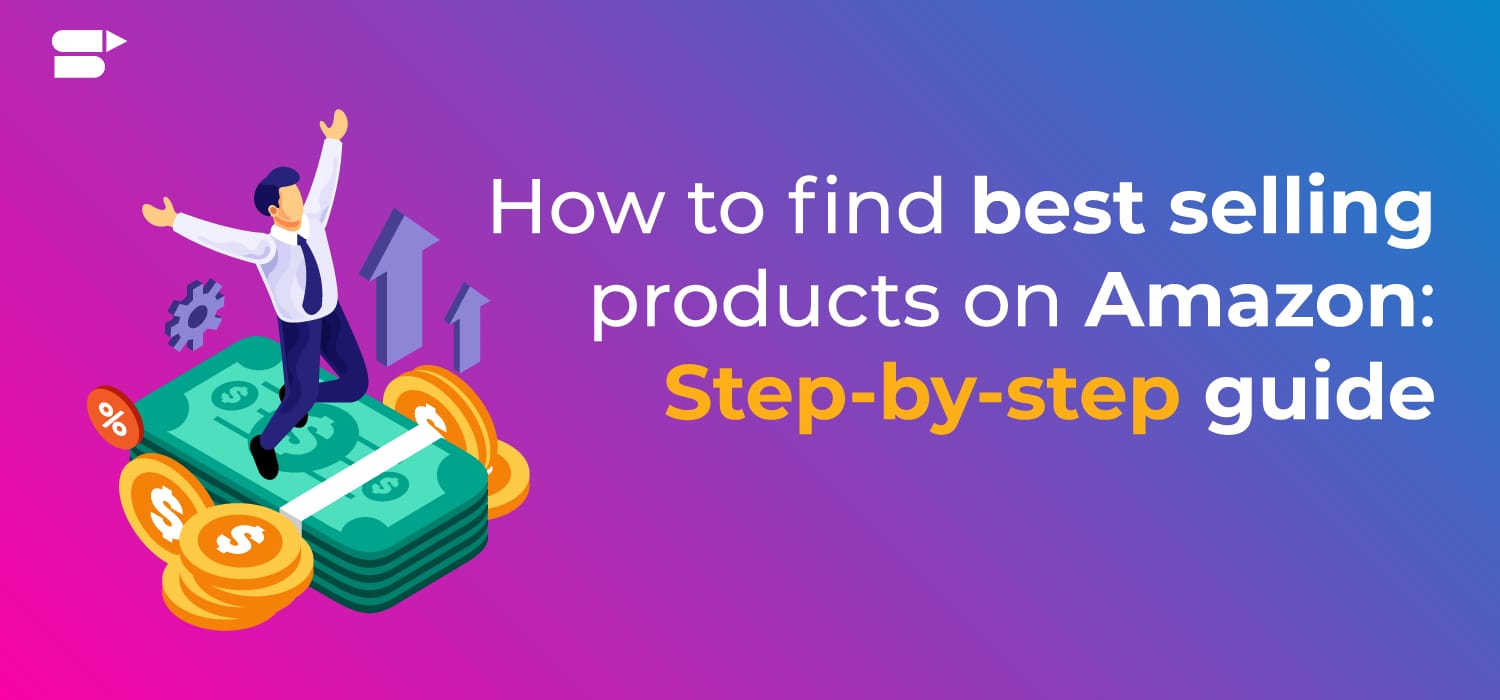Cyber Monday vs Black Friday Explained: Key Differences, Strategies & Seller Insights

Cyber Monday vs Black Friday isn’t about picking a winner. Last year, a skincare brand we analyzed ran identical promotions on both days. Their Black Friday sales were solid but not exceptional. Then Cyber Monday hit and they did nearly double the revenue with the same discount percentage. The difference? Their audience of working professionals wasn’t fighting mall crowds on Friday. They were shopping from their desks on Monday.
The two events pulled in $41.1 billion combined in 2024, but they worked completely differently. Amazon ran 42.5% fewer deals on Cyber Monday than Black Friday, yet Cyber Monday still hit $13.3 billion in sales. More deals doesn’t automatically mean more revenue when you’re reaching the wrong shoppers at the wrong time.
Black Friday draws the crowds. People shop in stores and online, buying electronics, toys, and big purchases. Cyber Monday belongs to digital shoppers who prefer browsing from their phones. Mobile drove 57% of Cyber Monday sales, and desktop conversion rates hit 7% compared to 6.5% on Black Friday. That skincare brand? They shifted 70% of their ad budget to Cyber Monday the following year.
The pattern shows up across categories. Electronics move faster on Black Friday with deeper discounts. Beauty and personal care products see steadier momentum through Cyber Monday with slightly smaller crowds but higher intent buyers. Kitchen items and home goods split the difference, performing well on both days but peaking at different hours.
The retailers who win treat this as a week-long event, not two separate days. They watch which products get added to carts on Friday but don’t convert until Monday. They adjust their inventory based on real-time demand instead of gut feelings. They shift ad spend when their specific conversion rates peak, not when some generic best practices say they should.
This Cyber Monday vs Black Friday guide breaks down exactly how to read those signals for your store, your products, and your actual customers so you’re not just copying what worked for someone else’s audience.
What Are Black Friday and Cyber Monday?
Black Friday and Cyber Monday are two of the biggest shopping events of the year, which bring a chance for sellers to offer deep discounts and massive sales to increase sales volume and bring a much-needed momentum to inventory movement.
Both of these events mark the unofficial start of the holiday shopping season. As shoppers find a way to cut their holiday shopping budget short by making the most out of these sales, sellers get the perfect chance to meet their Q4 goals.
Black Friday and Cyber Monday usually happen right after Thanksgiving in the United States, which is celebrated on the fourth Thursday of November each year. Cyber Monday falls on the Monday following Thanksgiving.
So, to give you a detailed roadmap, Thanksgiving comes first, followed by Black Friday. Then comes the Weekend Sales, followed by Cyber Monday.
This year, Black Friday sale will begin on Friday, 28th November 2025, and Cyber Monday will fall on Monday, 1st December 2025.
Black Friday vs Cyber Monday in Changing Context
When we talk about Cyber Monday vs Black Friday offers, it’s important to recognize that, while both take place during the week after Thanksgiving, their origins and focus are quite different. In essence, Black Friday vs Cyber Monday is not just about timing, it’s about shopper behavior, which we will discuss in detail.
Black Friday
Black Friday dates back to the early 1960s in Philadelphia, where police officers used the term to describe the heavy traffic and crowded streets that followed Thanksgiving. Retailers later adopted the term to signify the point when their annual sales moved from “in the red” (losses) to “in the black” (profits).
Over the decades, it evolved into a nationwide retail tradition, famous for early-morning doorbusters, long lines, and deep discounts on electronics, appliances, and other high-demand items. The same eventually was picked up by online retailers and thoroughly practiced by giants such as Amazon, making Amazon Black Friday vs Cyber Monday a major ecommerce event.
So, Black Friday on Amazon mirrors the traditional retail frenzy.
A growing portion of sales for a growing portion of Black Friday deals vs Cyber Monday happens online, making it critical for sellers to ensure their listings are optimized for visibility, pricing is competitive, and inventory levels can handle increased demand. Big-ticket items, electronics, and popular gift products tend to sell fast as people wait for these significant discounts before making an expensive or vanity purchase.
These days are also significantly known for attracting impulse purchases, and that makes the competition fierce, as every seller on marketplaces like Amazon wants to make the most of this opportunity. For sellers, the goal is to capitalize on both early-bird buyers and last-minute shoppers, aiming to offer the best deals. At this point, the focus shifts to making volume-based profit.
Cyber Monday, in contrast, was introduced much more recently, in 2005, by the National Retail Federation to promote online shopping, making it a purely online phenomenon. It takes place on the Monday after Thanksgiving and was originally aimed at shoppers returning to work, browsing for deals from their computers.
Shoppers specifically look for online deals across a wide range of categories, from electronics and home goods to clothing and accessories. Amazon sellers can leverage Lightning Deals, coupons, and promotional campaigns to capture tech-savvy consumers who are hunting for the best discounts.
Today, Cyber Monday has become a global online shopping event, featuring sitewide discounts, exclusive online deals, and tech bargains that rival even Black Friday’s offers. Understanding Cyber Monday vs Black Friday Amazon will ensure you’re following trends, allowing sellers to plan inventory, optimize listings, and execute campaigns to make the most out of their seasonal calendar.
Cyber Monday deals vs Black Friday often work in rivalry, featuring sitewide promotions, exclusive online-only offers, and competitive tech bargains.
Cyber Monday vs Black Friday (A quick comparison)
When we analyze Cyber Monday vs Black Friday, it’s clear that each event attracts different shopper behaviors, product focus, and selling dynamics. Here’s how we differentiate both in terms of timing, target, categories, and seller’s experience.
1. Timing and Focus
As mentioned earlier, Black Friday vs Cyber Monday has distinct origins. Black Friday has increasingly shifted online, but it is historically store-centric with a growing online presence, while Cyber Monday is digital-first and convenience-driven.
So, to launch your Black Friday campaigns 7–10 days early to capture deal-seeking shoppers before the rush. On the contrary, to run ads for Cyber Monday, you can simply schedule it to go live right after midnight.
2. Product Categories
Black Friday deals tend to focus on big-ticket items, such as TVs, laptops, appliances, and other high-demand electronics. Cyber Monday deals usually target online-friendly categories due to their specific nature.
So sellers focus on smaller electronics, software solutions, fashion, accessories, and online-exclusive products. Many retailers extend Cyber Monday discounts across a wider range of items than the limited Black Friday timeframe. In a way, Cyber Monday casts a broader net for online deals across multiple categories.
During this sale, you can push “quick decision” items under $50, as these perform best with impulse buyers. The price is low enough not to have them second-guessing, giving your inventory an added momentum.
3. Target Market
Black Friday attracts a broad audience, including shoppers who enjoy in-store excitement, families shopping together, deal hunters and impulse buyers. It appeals to both traditional and online shoppers.
Cyber Monday, on the other hand, primarily targets tech-savvy and convenience-oriented shoppers. Consumers who prefer online browsing, price comparison, and home delivery make up the bulk of the audience.
In the bowling segments, we’ve discussed the best actionable insights to help you make the most profit in Q4.
4. Selling Experience
Black Friday’s selling environment is often fast-paced and chaotic. You may also face bulk returns if Retailers compete for attention with flash sales, limited quantities, and high in-store traffic. The emphasis on urgency can create a sense of frenzy for both sellers and shoppers.
Cyber Monday provides a more measured digital experience. Sellers focus on website performance, online promotions, Lightning Deals, and targeted marketing campaigns. Shoppers can browse deals at their own pace, although top discounts still sell out quickly.
Pros and Cons of Cyber Monday vs Black Friday
Understanding the strengths and drawbacks of each of these shopping events helps sellers strategize their offers or blend both to maximize profits and engagement. So, let’s take a look at it in detail.
For Black Friday
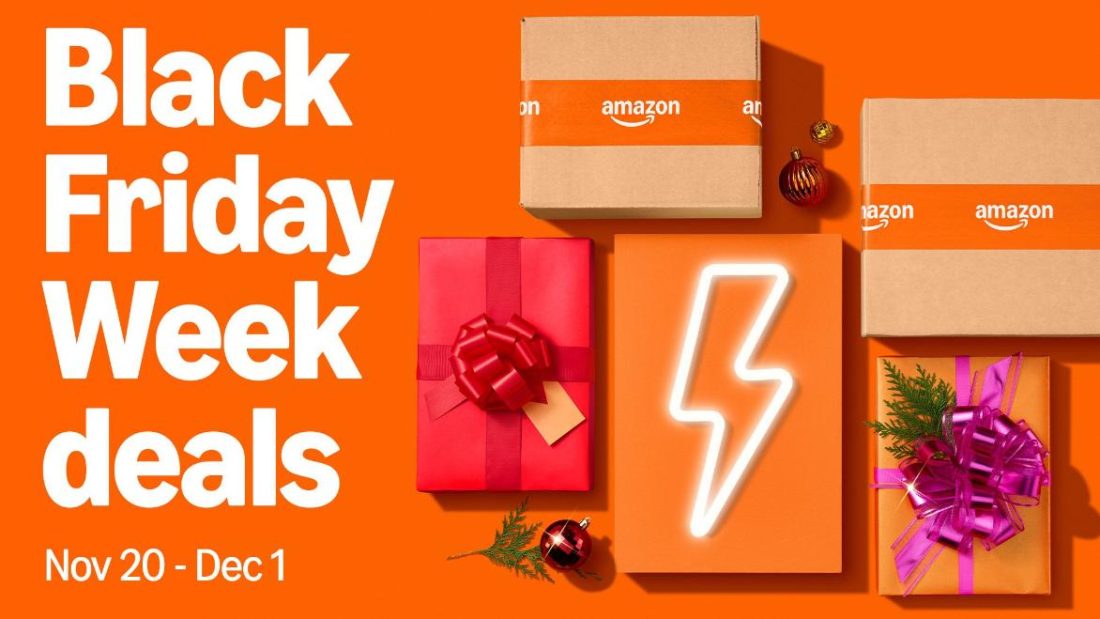
Pros
1. Massive Sales Volume in a Short Timeframe
Black Friday is known for consistently bringing record-breaking revenue within just 24 hours. The sheer consumer anticipation of Black Friday can give sellers a strong early boost before the holiday season even begins.
Why? Because customers are awaiting the sale for so long, even if you don’t offer heavy discounts, they’ll perceive it as the best deal available, given your competitors are following the same price range.
Most importantly, your customers are in a state of readiness, so you won’t have to put in efforts to convince a majority of them.
For example, an Amazon electronics brand offering 40% off smart TVs and headphones can see sales triple compared to average days, riding on heavy deal-driven traffic.
2. Great for High-Ticket and Bulk Purchases
Black Friday discounts often encourage big-ticket spending, and consumers are primed for expensive items to save big. Making it ideal for categories like electronics, appliances, or premium gadgets.
A seller running Amazon Lightning Deals on laptops or gaming consoles may completely sell out within hours due to the perception of limited-time value.
3. Builds Brand Visibility and FOMO (Fear of Missing Out)
Even if every shopper doesn’t buy, Black Friday deals attract massive attention that brands will never sleep on. Their purchase readiness often lead them to look around and that exposure can translate into long-term brand recall.
For instance, a fashion brand offering exclusive early-bird bundles might see a huge spike in wish-list additions, even among customers who don’t purchase immediately. This gives the former an edge between Cyber Monday vs Black Friday as it comes second.
Cons
1. Heavy Competition and Price Wars
Every retailer from small sellers to enterprise brands joins the race for sales and visibility. You may join the same bandwagon only to experience intense discounting and thin profit margins.
An Amazon accessories seller offering 50% off wireless earbuds may struggle to stay visible as competitors run ads and undercut prices aggressively and sometimes while running similar discounts.
2. Logistical Challenges and Inventory Pressure
Large order volumes can sometimes strain the fulfillment process and customer service systems, leading to delays or stockouts. This can especially make or break the game as it is a trope for attracting negative comments.
Sellers relying on FBA (Fulfillment by Amazon) may face delayed restocks due to warehouse congestion, impacting Buy Box performance for both in the comparison between Cyber Monday vs Black Friday.
3. In-Store and Online Overlap May Split Focus
For omnichannel brands, juggling both store and online operations can stretch resources and reduce campaign impact. Dealing with the post sale returns will also look challenging if you lack the resources to recover from it.
A brand like Samsung or Best Buy, which runs both physical retail promotions and Amazon storefront deals during Black Friday. They may face operational strain during Black Friday.
While in-store teams handle doorbuster crowds and inventory restocks, the digital team simultaneously manages online flash sales, ad campaigns, and customer inquiries. This split focus can lead to:
- Delayed responses from the sellers,
- Inconsistent pricing across online and offline channels which may generate a feeling of mistrust,
- Or brands may come across missed ad optimization windows.
Ultimately, this reduces overall campaign efficiency.
For Cyber Monday

Pros
1. Focused on Digital-First Shoppers
Cyber Monday targets tech-savvy, online consumers. Well, it’s in the name itself. It is for customers who value convenience via digital discovery. So, it’s perfect for sellers operating primarily on ecommerce marketplaces like Amazon. Since online sales have captured a massive part of the
A home décor seller offering a “Cyber Monday Exclusive Online Bundle” (like a 5-piece wall art set) can attract digital shoppers who skipped Black Friday crowds.
2. Easier Logistics and Automation
With no physical store chaos, sellers can rely on streamlined ecommerce tools, automated discounts, dynamic pricing, and real-time analytics to manage campaigns in case of the former, between Cyber Monday vs Black Friday.
Amazon sellers using automated pricing tools or DSP ads can optimize deals in real time without manual oversight.
3. Opportunity to Re-Engage Black Friday Visitors
Cyber Monday acts as a second chance to capture shoppers who browsed during Black Friday but didn’t purchase. So between Cyber Monday vs Black Friday, use the former as a veeto in case you fail to sell as much as you wanted for Black Friday.
An Amazon brand can retarget Black Friday visitors using Sponsored Display or DSP remarketing campaigns offering an additional 10% off Cyber Monday specials.
Cons
1. Shorter Attention Span and Deal Saturation
This is one of the occasions when sellers will not just run deals and offers, but implement elaborate marketing strategies . As a result, buyers face a flood of digital ads and email promotions, making it harder for any one brand to stand out. So it decreases the effectiveness of your promotional efforts.
Example:
An Amazon seller running standard discounts may lose out to sellers offering lightning deals or influencer-led promotions.
2. Lower Average Order Value (AOV)
While traffic is high, it has been noticed that Cyber Monday shoppers tend to buy smaller items or gifts rather than high-ticket items, leading sellers to experience lower Average Order Value (AOV).
A tech accessory seller might see strong sales volume but lower revenue per order compared to the latter, between Cyber Monday vs Black Friday.
3. Technical and Platform Dependency
Heavy website traffic can lead to slowdowns or listing issues because its an online sale event. This especially holds true for independent sellers not using stable marketplace platforms like Amazon or Shopify.
A standalone ecommerce store could face checkout lags during peak hours, costing conversions, whereas Amazon sellers benefit from built-in infrastructure.
Top-Performing Categories: Cyber Monday vs Black Friday
While both events drive massive online traffic, their product trends reflect the shopper mindset. Black Friday attracts big-ticket buyers hunting for high-value deals, while Cyber Monday brings in digital-first consumers seeking smart gadgets and lifestyle upgrades.
Top 5 Black Friday Categories
Here are the top 5 best-selling categories from the Black Friday Sale, backed by Adobe’s 2024 report.
1. Electronics (27.4% average discount)
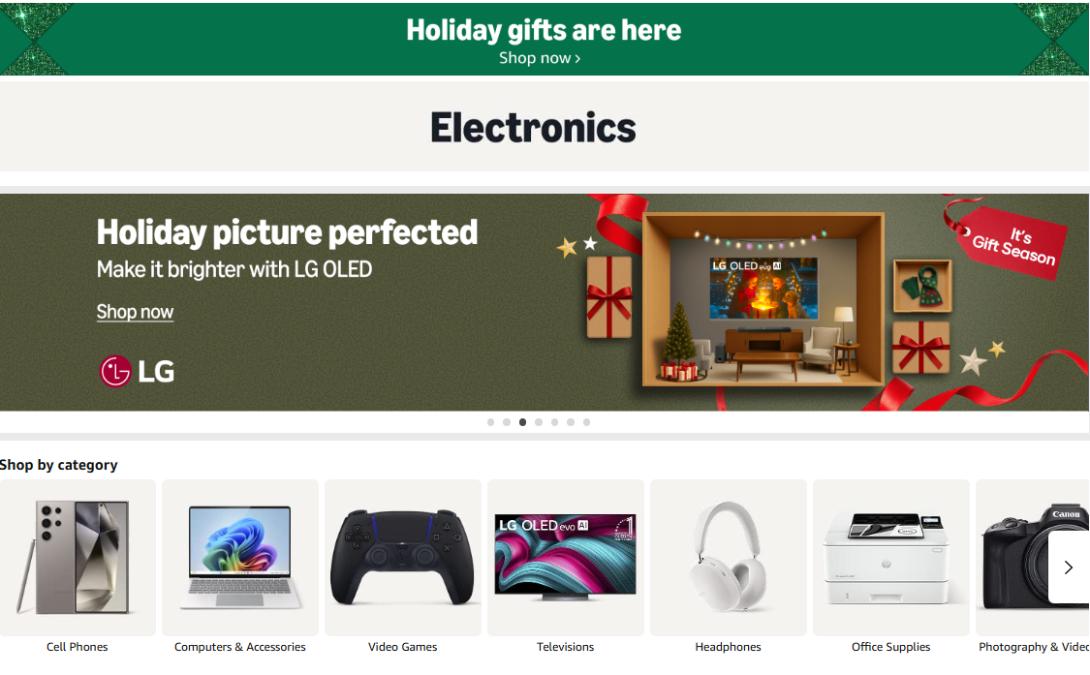
Electronics remain the cornerstone of Black Friday sales. From smart TVs and gaming consoles to headphones and tablets, shoppers wait all year for steep markdowns on these high-value products. The appeal lies in the perception of “once-a-year” tech deals, particularly for families upgrading home entertainment systems before the holidays.
2. Toys (622% surge in online sales compared to October 2024)
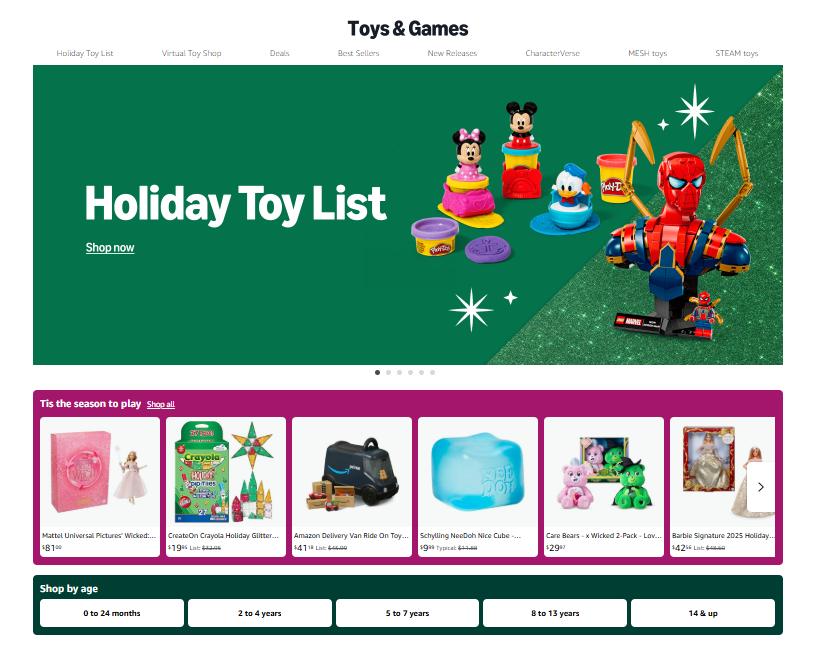
Parents leverage Black Friday to get ahead on holiday gifting, making toys one of the biggest gainers. With discounts averaging 27.8%, categories like LEGO sets, action figures, and collectible dolls see record-breaking sales, especially when bundled or limited-edition items are in stock.
3. Televisions (24.2% discount)
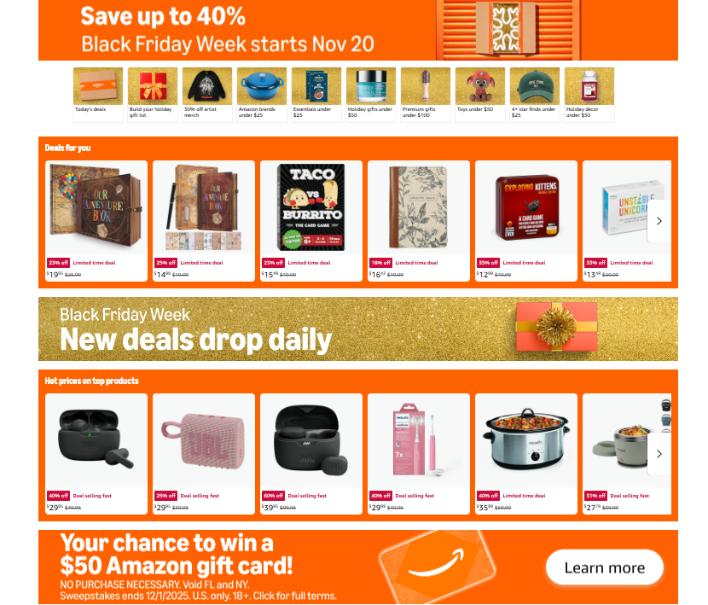
TVs are synonymous with Black Friday doorbusters. Large-screen and 4K models attract both in-store and online buyers seeking “instant gratification” deals, often with added freebies such as streaming subscriptions or extended warranties.
4. Apparel (22.2% discount)

Black Friday also serves as a seasonal wardrobe refresh moment. With colder months ahead, outerwear, boots, and accessories trend heavily, especially among budget-conscious consumers looking for quality winter wear at markdown prices.
5. Sporting Goods (19.5% discount)

Sporting goods and fitness accessories surge due to the “new year, new me” mindset beginning early. Consumers pick up discounted gear for winter sports or fitness goals, an ideal cross-sell opportunity for sellers offering complementary items like water bottles or apparel.
Top 5 Cyber Monday Categories
Here are the top 5 best-selling categories from the Cyber Monday Sale, backed by Adobe’s 2024 report.
Electronics (up 452% YoY on average day sales)
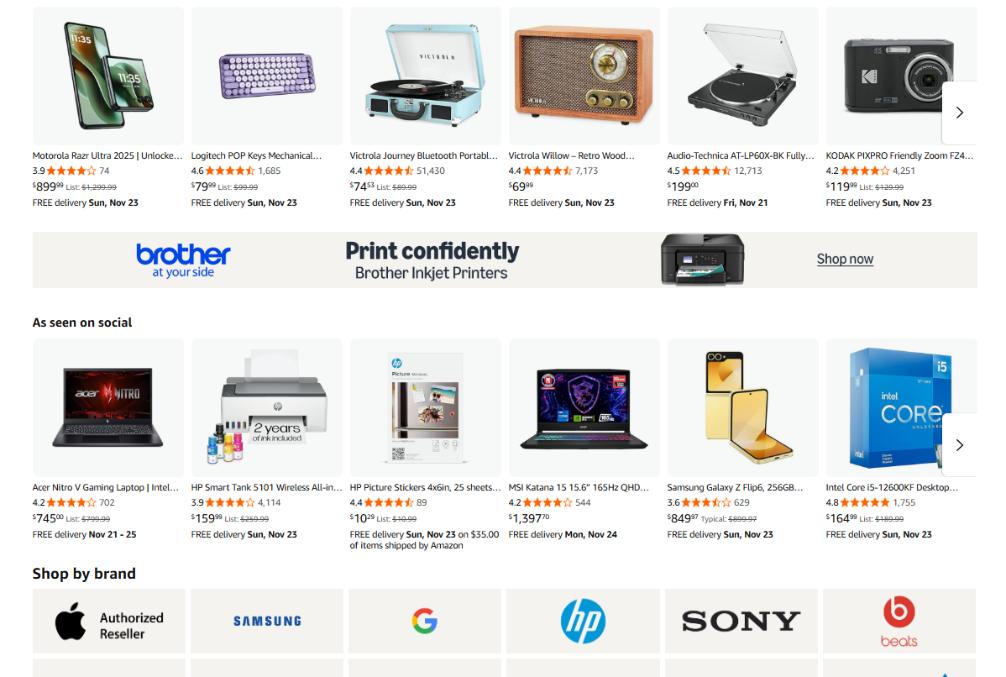
Electronics dominate Cyber Monday too, but with a stronger focus on personal tech like laptops, tablets, and smart home devices. The digital-savvy audience uses Cyber Monday to score better online-only bundles and last-minute price drops post–Black Friday.
Toys (up 680% vs. October average)
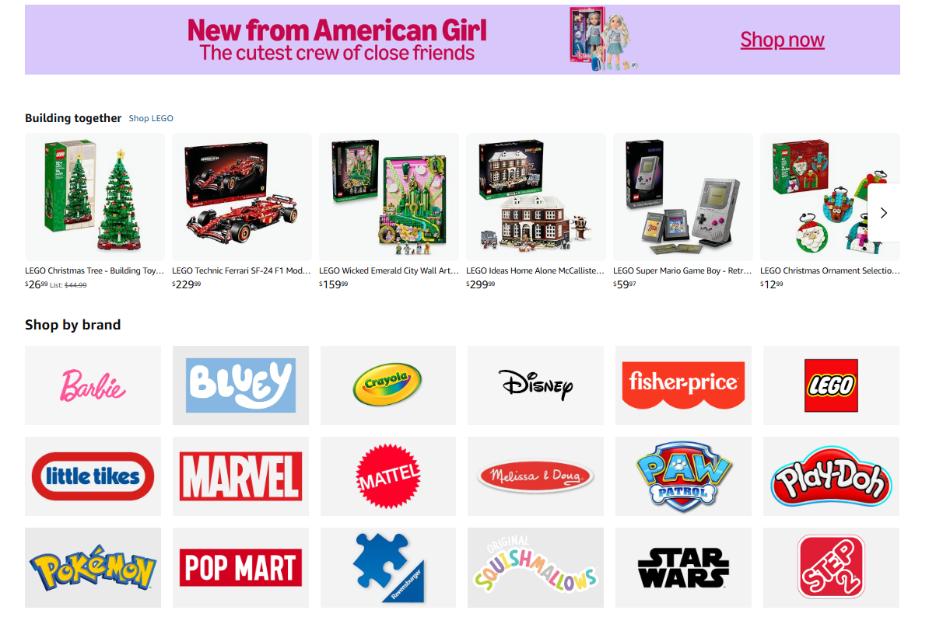
Toys remain a surprise performer. Cyber Monday appeals to late shoppers who prefer the convenience of doorstep delivery perfect for parents balancing work and gifting. Brands leveraging fast shipping or exclusive online sets perform best.
Apparel (23.2% average discount, up 392% in sales)

Online fashion retail thrives during Cyber Monday, with heavy discounts on casual and activewear. The combination of broader size availability online and flash promotions from DTC fashion brands keeps conversions high.
Personal Care & Beauty (up 530% YoY)

Categories like skincare, makeup, and hair tools saw record growth in 2024. With global discounts reaching up to 40%, self-care and wellness products became impulse buys. Beauty brands that paired discounts with limited-edition bundles saw the highest engagement rates.
Home Appliances (up 464% YoY)

From air fryers to smart vacuum cleaners, practical home tech has found its Cyber Monday sweet spot. Shoppers gravitate toward these mid-tier purchases that blend function and convenience, especially products trending on TikTok or Amazon’s “most wished for” list.
Common Rules for Both Cyber Monday vs Black Friday Sale
Below are best practices that apply no matter whether your focus is Black Friday, Cyber Monday, or both. These are the foundational rules you need to follow to build your event strategies.
Plan Early Enough
Since you need to consider aspects such as inventory forecasting, promotions calendar, and supplier coordination, beginning to plan your sales months ahead can be beneficial. It makes sure everything moves according to the right pace.
Note: You can add early-bird teasers to capture consumer interest before the real hype begins. Amazon itself recommends starting promotions and discounts early to ride the momentum, which can significantly impact visibility in Amazon Black Friday vs Cyber Monday.
Begin warming up your ad audiences 3–4 weeks in advance. Use awareness campaigns on platforms like Amazon DSP, Meta, or Google to introduce products and collect valuable engagement data. This early data helps you identify which segments are most responsive, so when you switch to conversion-focused campaigns during the sale days, your ROAS improves significantly.
Inventory Readiness & Buffer Stock to Never Miss out on Profit-making opportunities
Having sufficient inventory for your anticipated demand is not enough, plus a safety buffer. For Amazon FBA sellers, it’s easier to map your dates because they absolutely need to ship to fulfillment centers before cut-off dates to avoid delays. For non-FBA or independent stores, you can coordinate with 3PL companies to ensure fast fulfillment, aligning with the timelines. This prevents missed sales during Black Friday deals vs Cyber Monday.
Use real-time ad controls. If a product’s inventory starts thinning, adjust campaigns immediately to push substitute SKUs or redirect ad spend toward best-sellers that are fully stocked. Tools like SellerApp’s rule-based automation can help you set these conditions automatically.
Optimize Listings, Creatives & Store Infrastructure
Always use holiday or event-specific keywords such as “Black Friday deal,” or “Cyber Monday offer” in descriptions or backend terms to give it an organic visibility boost for the sales. So that when someone searches “best Cyber Monday deals on mens watch,” your product listings (as a seller of watches) show up for it.
In the battle of Black Friday vs Cyber Monday, this is tip never to miss. In tandem, update images, banners, and posts to highlight your deals. Want to go beyond the basic requirements? Test site load times to make sure you can handle the sale rush. You can also test the mobile responsiveness of your site and server capacity.
Consistent, Multi-Channel Marketing
Leverage multichannel marketing strategies. Use email, social media, ads, influencer outreach, and SMS in a coordinated way to introduce deals in advance. It stirs up anticipation which often becomes a driver of purchase, even if you don’t go over and beyond with the discounts. We often find brands doing this to protect their margins. Try drip promos, and maintain momentum across the event window.
In addition, you can use retargeting to bring back browsers and cart abandoners. If you’re an omnichannel seller, plan a consistent strategy to be relevant instead of separating Black Friday vs Cyber Monday strategies.
Run retargeting campaigns on Meta, Google, and Amazon DSP to bring back browsers and cart abandoners. For omnichannel sellers, maintain consistent messaging across all ad creatives. Sync your ad schedules so that promotions appear simultaneously across marketplaces, website banners, and PPC ads.
Strong Customer Experience & Support
During these high volume sale events, be ready to scale customer support. We’re talking about extra staff support, chatbot implementation, and pre-written responses.
Lay the rules of shipping and return policies shoppers expect transparency.
Frequent Monitoring & Agile Adjustments
Track traffic, conversion rates, ad costs, and stock levels in real time. Be ready to adjust bids, ad spend, prices, or restock priorities on the fly. Avoid drastic last-minute structural changes, like rewriting all keywords the night before.
Pro tip: SellerApp recommends raising ad bids by 10–30% during BFCM, while maintaining campaign stability, keeping your store competitive without disrupting performance.
Integrate customer reassurance messaging into your ads. Highlight “fast shipping,” “easy returns,” or “24/7 support” in Sponsored Brand headlines or social ad copy to build trust and reduce hesitation during the checkout phase.
Post-Event Review & Retention Strategy
After the event, analyze the results, which SKUs, channels, and creatives performed best? Retarget new customers with follow-up offers, loyalty programs, or cross-sells to convert one-time buyers into repeat customers. Document insights and refine your strategies for next year to continuously improve performance in Cyber Monday vs Black Friday campaigns.
Cyber Monday vs Black Friday: Exclusive Strategies for Each Event
When comparing Black Friday vs Cyber Monday, it’s clear that each event attracts distinct shopper behaviors. Understanding these differences can help you maximize revenue, protect margins, and engage the right buyers at the right time. Especially for platforms like Amazon.
Tips for Black Friday
1. Deep Discounts on Big-Ticket Items
In the Black Friday vs Cyber Monday battle, Black Friday dominates for high-value, in-demand products. Amazon data shows 27.4% of buyers are motivated by electronics deals, with TVs at 24.2%. Prioritize these SKUs to drive traffic.
2. Blend Online and Offline Channels for Successful
For sellers with an omnichannel presence, combine in-store and online campaigns. Options like
In-store pickup, “reserve online, pick up in-store,” and local promotions can bridge channels and enhance visibility of your business.
3. Urgency Timing & Buzz Creation
Use limited-time flash deals, countdown timers, and hourly rotations to sustain excitement. Scarcity sale tactics like “first 100 buyers” create urgency that converts quickly, giving your organic growth a boost.
4. Protect Margins by Readjusting according to competitor prices
Discounting can be aggressive during Black Friday, when we compare Cyber Monday vs Black Friday, so you need to stay prepared for a competitive approach. Track competitor pricing, use dynamic repricing tools, but avoid margin erosion at all costs. Experts recommend not putting all your eggs in one basket; be ready to extend deals strategically.
In case you’re selling a popular smart TV on Amazon. During Black Friday vs Cyber Monday, competitors may slash prices by 20–30% overnight. If your usual price is anchored at $800, dropping to $640 may attract buyers pretty easily, but if your profit margin is only 15%, you’ll actually lose money on each sale.
Instead, you could use dynamic repricing tools to automatically adjust your price within a safe range (e.g., $720–$780) so that the price readjusts according to competitor pricing, so you sell without eroding margin.
You can also offer limited-time deals or bundles, like adding a soundbar or HDMI cable, so the perceived value increases without lowering your base price too much.
When we suggest that you extend Black Friday sales vs Cyber Monday deals strategically, we mean, if a TV sells out quickly on Black Friday, you could launch a slightly smaller promotion on Cyber Monday, capturing shoppers who missed the first deal while maintaining healthy margins.
5. Brand Protection first
Enroll in Brand Registry and monitor unauthorized sellers before you prepare for your Amazon Cyber Monday vs Black Friday strategies. Offer exclusive bundles or products to differentiate your store from mass discounting.
How to properly run ads on Black Friday items?
Bigger Discounts on Big-Ticket Items
Run Sponsored Brand ads promoting premium electronics and appliances with deal badges. Complement with Google Shopping ads for omnichannel exposure. Visibility across multiple channels ensures your product stays top-of-mind throughout the buyers’ decision journey.
Online and Offline Campaigns in Tandem
While Black Friday has moved heavily online, it still holds a hybrid edge. Many consumers browse online but purchase in-store to avoid delivery delays. How to combat the situation? Use geo-targeted Meta or Google Local campaigns to advertise nearby store offers as a part of your omnichannel sale campaign. Add “Reserve Online, Pick Up In-Store” CTAs as an option in your ad copy to drive both web traffic and in-store sales. Also, for omnichannel brands, align inventory visibility across your ecommerce site, Amazon listings, and in-store systems to avoid overpromising.
Blending digital ads with local intent campaigns captures both online researchers and last-minute in-store buyers, helping you dominate both discovery and conversion moments.
Countdown Ads for an Urgency Signal
Black Friday thrives on urgency. So, it’s a clever move to combine Amazon Lightning Deals with Sponsored Product Ads displaying urgency-driven phrases like “Ends in 3 hours” or “Limited stock available.”. You can also consider Meta carousel ads with countdown timers and rotating offers that refresh hourly. Implement Google Performance Max campaigns that automatically push your top-converting SKUs during high-traffic periods.
Scarcity-driven creatives tap into buyer FOMO, accelerating conversions. This, in turn, amplifies your organic ranking through increased engagement and sales velocity.
Protect Margins with Smart Bid Automation
Deploy AI-powered bid optimization tools (like SellerApp’s rule-based bidding) that dynamically adjust your bids based on performance and increase conversion likelihood. Combine these with dynamic repricing software to maintain competitiveness without undercutting your profitability thresholds.
Note: You need to set a “safe bid range” that prevents overspending during sudden CPC spikes on Black Friday morning.
Bid automation ensures your campaigns remain visible and competitive while protecting profit margins. It also saves time when CPC volatility peaks across Amazon and Google Ads ecosystems.
Brand Protection
A strong brand defense strategy maintains your listing integrity. On top of that, it enhances consumer trust and keeps your offers looking exclusive from price-cut clones (a.k.a your competitors).
So, make sure to,
- Enroll in Amazon Brand Registry and monitor Buy Box suppression or hijacking through Seller Central’s Brand Dashboard.
- Run Sponsored Brand Video ads to showcase authentic products, emphasizing your logo, packaging, and official store presence.
- Create exclusive bundles or limited-edition sets that cannot be easily replicated by unauthorized sellers.
Cyber Monday Exclusive Tips
1. Run sales on Impulse purchases
In the Cyber Monday vs Black Friday comparison, Cyber Monday thrives on smaller, online-friendly items such as tech accessories, gadgets, and beauty products. Adobe reports electronics, apparel, and toys see strong discounts on Cyber Monday (e.g., 30.1% off on electronics on average).
You can run short-burst Sponsored Product campaigns on Amazon targeting fast-moving ASINs priced under $50. Keep CPC bids low but frequency high to dominate visibility during high-volume search hours. In addition, you can cross-promote complementary add-ons or bundles to increase cart value.
2. Dynamic remarketing for Black Friday Browsers
Among Cyber Monday vs Black Friday deals, many shoppers consider Black Friday for research. They browse products, compare prices, read reviews, and add items to carts or wish lists. But don’t necessarily buy immediately. Then, on Cyber Monday, they return to make their purchase, often looking for the best online-only deals.
Dynamic remarketing for Black Friday vs Cyber Monday Amazon deals is a way to reconnect with these shoppers. Using this strategy, you can serve personalized ads that show the exact products they viewed, added to their cart, or similar items. Pairing these ads with exclusive incentives like a small discount, free shipping, or a bonus bundle encourages them to complete the purchase.
3. Leverage Promotional Timing
After Black Friday, many shoppers are still in “deal-seeking mode,” even if they didn’t make a purchase, they are still comparing Best Buy Cyber Monday vs Black Friday offers in between or anticipating better deals for Cyber Monday.
By sending early teasers via email, SMS, or push notifications, you can capture attention before Cyber Monday officially begins. These teasers can hint at upcoming discounts, limited-time bundles, or exclusive product drops.
Say, on Friday night, you email customers a teaser “Cyber Monday deals start at midnight. Up to 30% off select electronics.” At midnight, your site launches a timed flash sale with a countdown clock, and select VIP customers get early access to your top-selling items.
This approach maximizes conversions by leveraging both anticipation and urgency, which are key differences between Cyber Monday vs Black Friday sales. At midnight, swap creatives automatically to display live discounts and limited-time flash offers. Use Sponsored Brand Video ads that start with a countdown animation, an effective tactic to grab attention instantly in Amazon search results.
5. Optimize for Speed & Conversion
On Cyber Monday vs Black Friday sales, speed and ease of purchase are critical. Optimizing for fast, frictionless conversions ensures you don’t miss out on eager, deal-driven shoppers. So, streamline funnels by reducing unnecessary steps between product selection and purchase.
For example, avoid forcing users through multiple pages just to review shipping or payment options. Offer one-click checkout to eliminate the friction of re-entering info. This speeds up the process in a way that prevents interested leads from dropping off.
6. Extend Deals to extend profit-making opportunities
Because Cyber Monday is an online-only environment, you have the flexibility to adjust deals in real time based on traffic, inventory, or competitor activity. For example, monitor campaign performance in real-time.
If a top SKU sells out, shift ad spend to related accessories or bundles, use automated rules to increase budgets while running ads on high-ROAS campaigns during late-night surges. You can also keep remarketing campaigns active for another 48 hours with messaging like “Cyber Week Continues.”
Final thoughts
Mastering Cyber Monday vs Black Friday isn’t about picking sides; it’s about leveraging both. Black Friday drives high-volume, high-ticket sales, while Cyber Monday targets online-savvy shoppers with convenience and precision. Sellers who align inventory, pricing, and marketing across both events can maximize visibility, conversions, and long-term customer engagement.
To make the most of these mega-sale events, working with experts like SellerApp PPC Agency can help optimize your campaigns, manage budgets efficiently, and ensure your deals reach the right audience at the right time, so you can turn seasonal traffic into real revenue.








